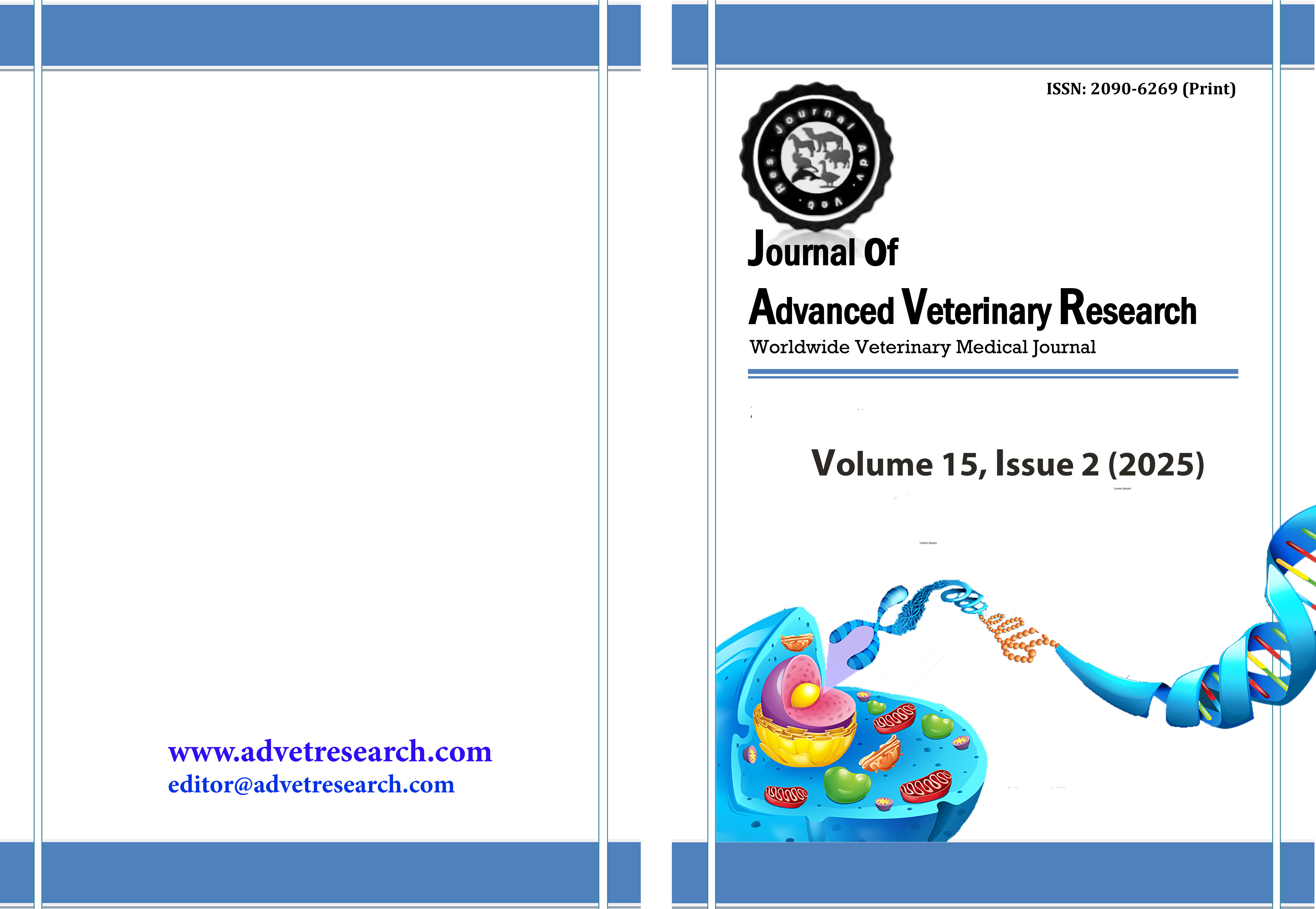Molecular epidemiology of E. coli infection in Arabian horses with acute respiratory disease
Keywords:
Equine, Infection, Bacteria, Epidemiology, EgyptAbstract
In the present investigation, the molecular epidemiology of the E coli infection in Arabian horses with acute respiratory diseases in Egypt was investigated. This was achieved by investigating 69 Arabian horses (diseased, n=50; apparently healthy, n=19). Competent clinical examinations of all horses and nasal swabs were performed for bacteriological investigation. For confirmation, polymerase chain reaction (PCR) for the confirmatory identification of E. coli matched the isolation percentage on its selective medium. The frequency of E. coli isolated from healthy horses was higher than that isolated from diseased horses (p=0.021, OR 8.471, CI 95% CI, 1.038 – 69.138). Breed, vaccination, overcrowding, and climatic conditions were significantly associated with the prevalence of E. coli isolates. Arabian horses showed a higher isolation rate (39/52; 75%) than the other breeds (13/52; 25%). The frequency E. coli isolation (39/52; 75%) was significantly associated with the use of horses for racing (p < 0.05). There was a higher isolation percentage in vaccinated horses (41/52; 78.8%) compared in non-vaccinated horses 11/52(21.2%). Horses living in overcrowded housing showed a higher isolation percentage (36/52; 69.2%) than those housed in individual stable housing (16/52; 30.8%). A higher percentage of isolates was also recorded in cold and harsh weather (48/52; 92.3%) than in good and hot climates (4/52, 7.7%). E. coli virulence genes eaeA and fimH were identified at 248 and 508 bp, respectively. However, ibeA was not detected. The gene eaeA was detected in 9/52 (17.3%) of E. coli strains isolated from diseased horses. fimH was detected in 45/52 (86.5%) E. coli strains. However, ibeA was not expressed. The results of this investigation emphasize the possible risk factors correlated with E. coli in Arabian horses with acute respiratory disease. The present results may be helpful for developing rigorous preventative measures for this infection.
Downloads
Published
How to Cite
Issue
Section
License
Copyright (c) 2025 Journal of Advanced Veterinary Research

This work is licensed under a Creative Commons Attribution-NonCommercial-NoDerivatives 4.0 International License.
Users have the right to read, download, copy, distribute, print, search, or link to the full texts of articles under the following conditions: Creative Commons Attribution-NonCommercial-NoDerivatives 4.0 International (CC BY-NC-ND 4.0).
Attribution-NonCommercial-NoDerivs
CC BY-NC-ND
This work is licensed under a Creative Commons Attribution-NonCommercial-NoDerivatives 4.0 International (CC BY-NC-ND 4.0) license




